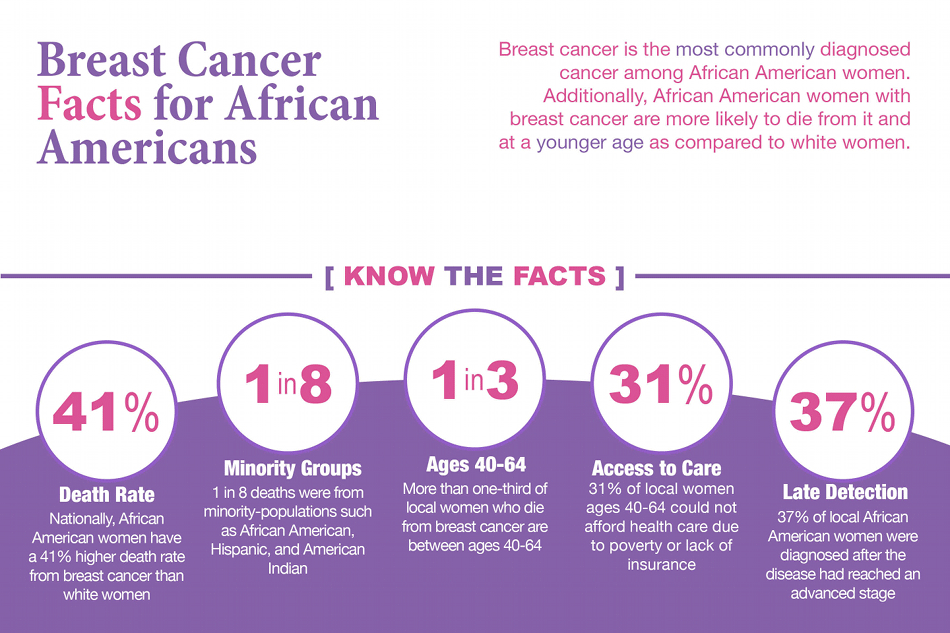
Facts & Statistics

ABOUT BREAST CANCER
Breast cancer is the most common cancer among women worldwide. However it can be treated especially when it is detected early. Being diagnosed with Breast Cancer is not a death sentence.
The signs of having breast cancer can be subtle and may not be the same for all women. However, the most common signs are a change in the look or feel of the breast, a change in the look or feel of the nipple and nipple discharge.
Breast Cancer can be invasive which means cancer cells from inside the milk ducts or lobules break out into nearby breast tissue. You see cancer cells can travel from the breast to other parts of the body through the blood stream or the lymphatic system. They may travel early in the process when a tumor is small or later when a tumor is large. The lymph nodes in the underarm area (the axillary lymph nodes) are the first place breast cancer is likely to spread. In advanced stages, breast cancer cells may spread to other parts of the body like the liver, lungs, bones and brain (a process called metastasis). There, the breast cancer cells may again begin to divide too quickly and make new tumors. This is called metastatic breast cancer.
Breast Cancer can be metastatic. This means that the breast cancer has spread beyond the breast to other organs in the body (most often the bones, lungs, liver or brain). Although metastatic breast cancer has spread to another part of the body, it is considered and treated as breast cancer. Some women have metastatic breast cancer when they are first diagnosed (called de novo metastatic breast cancer). However, this is not common in the U.S. (about 5 percent of diagnoses) More commonly, metastatic breast cancer arises months or years after a person has completed treatment for early or locally advanced (stage I, II or III) breast cancer. This is sometimes called distant recurrence.
TREATMENT: Treatment for early breast cancer may include some combination of:
Surgery
Radiation therapy
Chemotherapy
Hormone therapy
Targeted therapy

